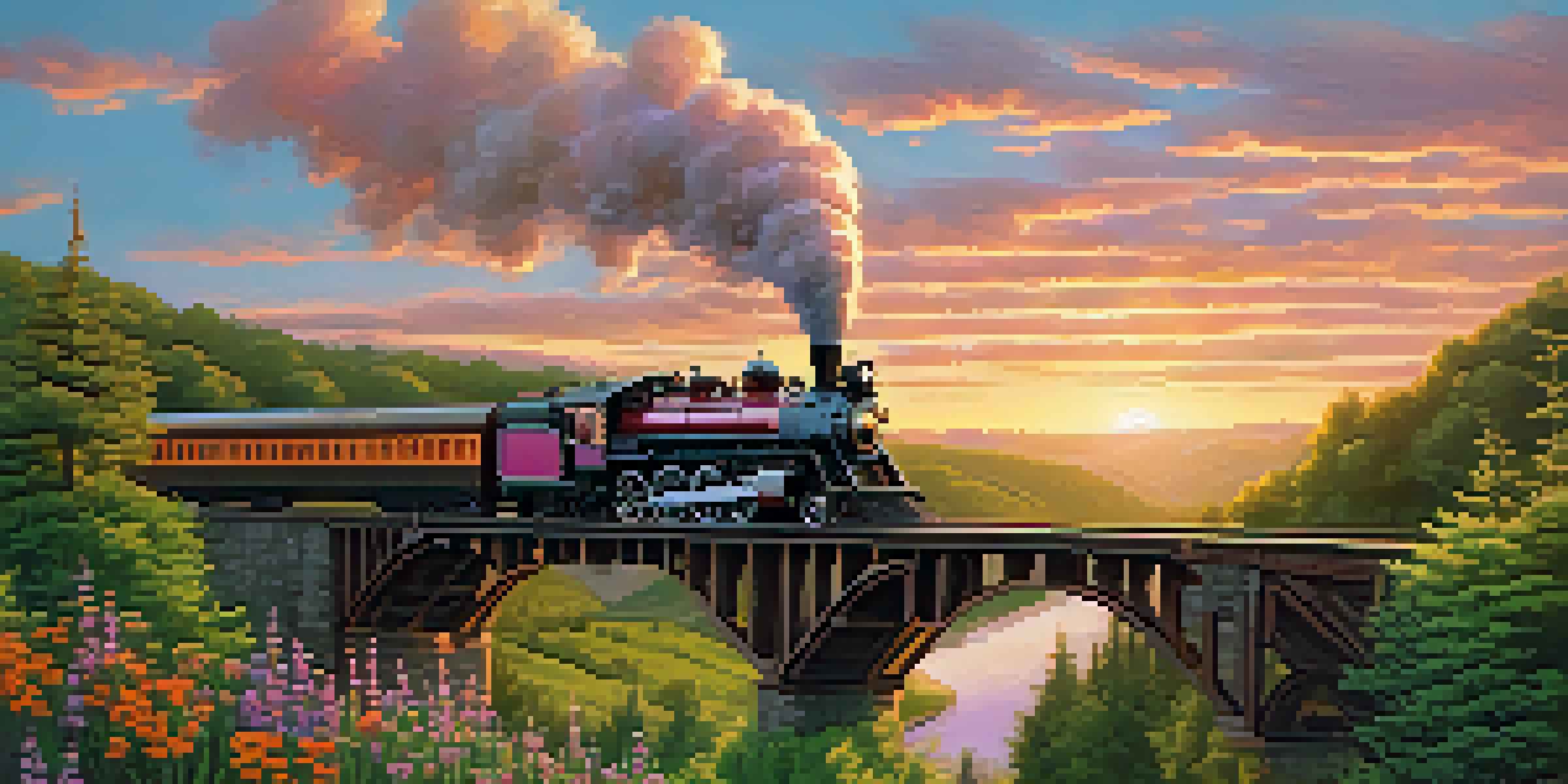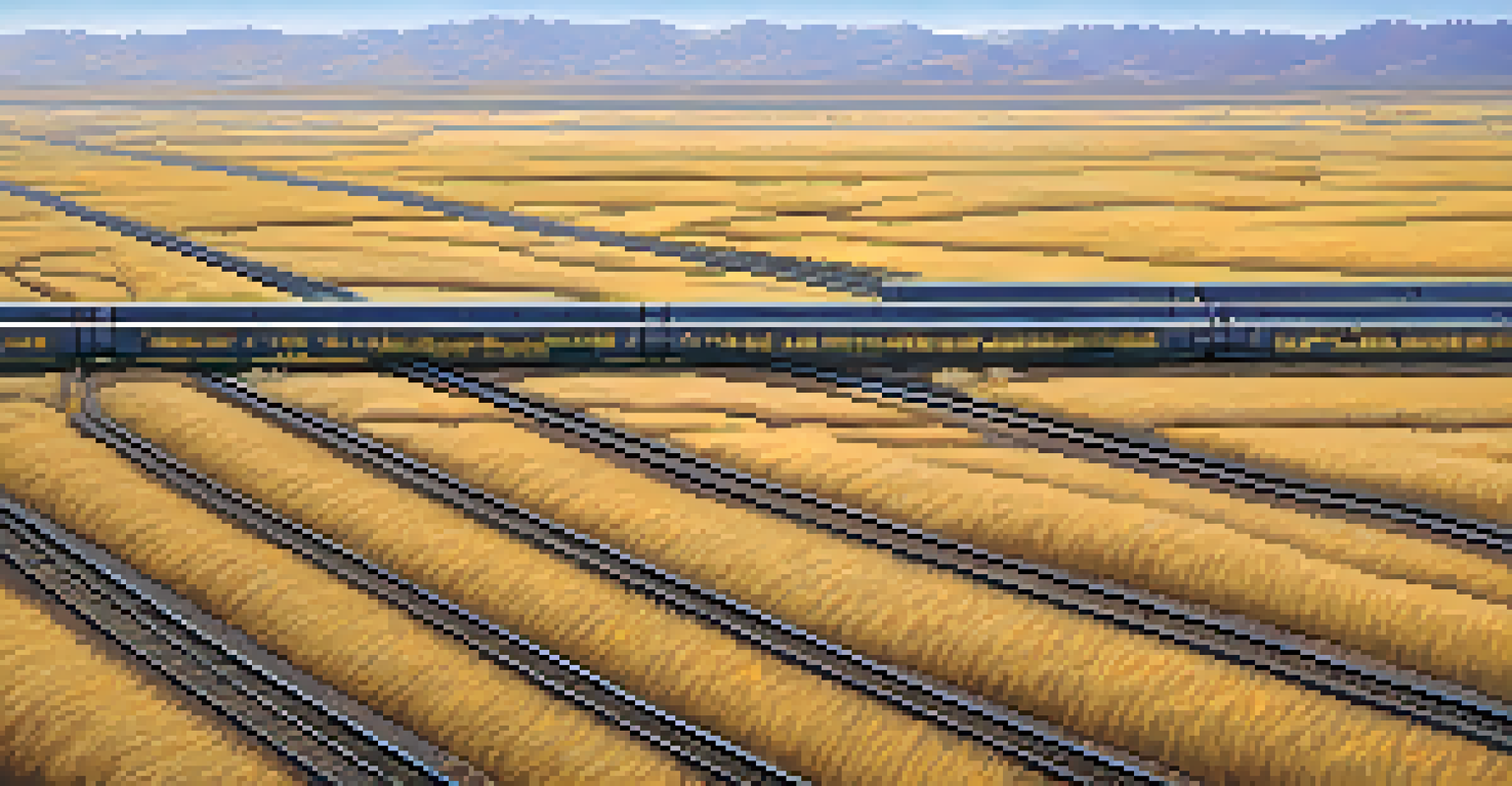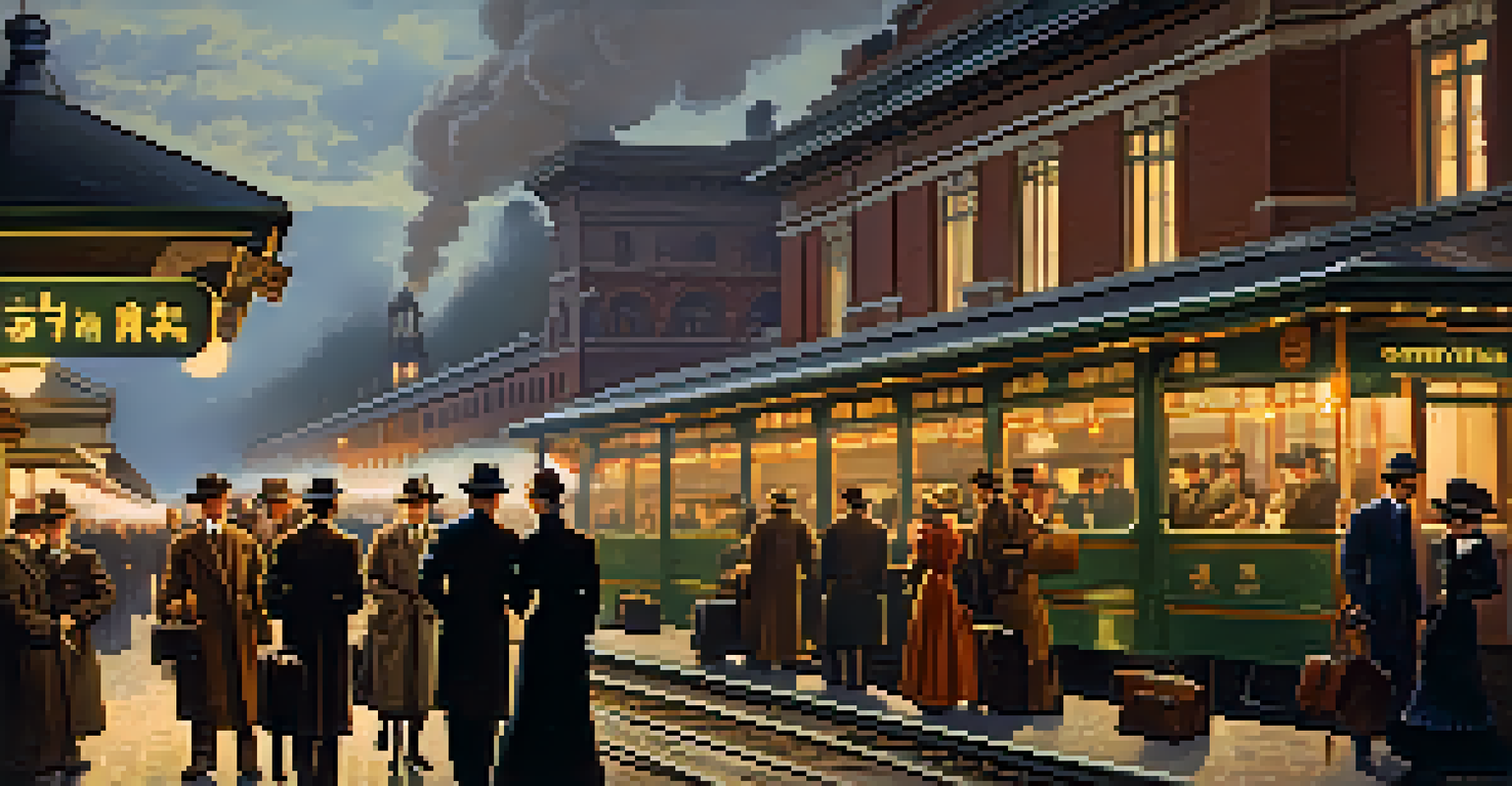Riding the Rails: A Journey Through American History

The Birth of America's Railroads: A Revolutionary Idea
In the early 19th century, the concept of railroads was revolutionary, connecting distant places and people. The first steam locomotive, built in 1825, marked the beginning of a new era in transportation. Railroads promised to speed up travel and trade, transforming the landscape of American commerce.
The railroads are the arteries of the nation, connecting its heart to the farthest reaches of its land.
As the nation expanded westward, the need for efficient transportation became paramount. The completion of the Baltimore and Ohio Railroad in 1828 paved the way for thousands of miles of tracks to crisscross the country. This network not only facilitated the movement of goods but also fostered the exchange of ideas and cultures.
Railroads quickly became the backbone of the American economy, providing jobs and stimulating growth in various industries. Towns sprang up along the tracks, as people flocked to areas that were once remote. It was a time of hope and opportunity, with railroads serving as symbols of progress.
The Impact of Railroads on the American Landscape
As trains chugged across the country, they reshaped not just the economy but also the physical landscape. Vast stretches of land were leveled to lay tracks, and tunnels were carved through mountains, showcasing engineering marvels of the time. The Great Plains, previously seen as barren, became vital farmland, connected to major markets.

Ironically, the expansion of railroads also led to the displacement of Native American tribes. As settlers moved westward, encouraged by the promise of land and opportunity, many indigenous communities were forced from their ancestral homes. This conflict over land was a significant and often tragic aspect of America's railroad history.
Railroads Transformed America
The development of railroads revolutionized transportation, connecting distant places and fostering economic growth across the nation.
Despite the challenges, railroads fostered a sense of unity in a diverse nation. The ability to travel across states in mere days rather than weeks helped weave together the fabric of American identity. People from different backgrounds began to interact and share experiences, all thanks to the railroads.
The Golden Age of Railroads: Innovation and Expansion
The late 19th century marked the Golden Age of Railroads, characterized by rapid expansion and innovation. New technologies, such as air brakes and steel rails, improved safety and efficiency. This era saw the rise of iconic trains like the Transcontinental Railroad, which connected the East and West Coasts.
The railroad is the greatest single factor in the development of our country.
With the completion of the Transcontinental Railroad in 1869, travel time across the country was reduced dramatically. What once took months was now a journey of just a few days. This monumental achievement not only facilitated commerce but also ignited a sense of national pride.
Railroads became a symbol of American ingenuity, attracting investors and entrepreneurs who saw potential in this burgeoning industry. Rail companies began to compete for customers, leading to lower fares and more services. The railroad was more than just a means of transport; it was an economic engine driving the nation forward.
The Role of Railroads in the Industrial Revolution
Railroads played a crucial role in the Industrial Revolution, serving as the arteries of industry. Factories relied on trains to transport raw materials and finished goods, creating a symbiotic relationship between the two. This reliance fueled unprecedented industrial growth and urbanization in America.
As cities expanded, railroads facilitated the movement of people seeking jobs in factories. They not only transported goods but also became a lifeline for laborers who flocked to urban centers. The growth of cities like Chicago and Detroit can be traced back to their strategic locations along major rail lines.
Cultural Impact of Railroads
Railroads not only influenced the economy but also shaped American culture, inspiring literature, music, and a sense of adventure.
Moreover, railroads helped standardize time across the country with the introduction of time zones. This innovation was essential for scheduling train departures and arrivals, but it also altered everyday life for Americans. The rhythm of life began to align with the punctuality of the trains, making schedules a new way of living.
The Cultural Impact of Railroads on American Society
Beyond economics, railroads significantly influenced American culture and society. They inspired a wealth of literature, music, and art, capturing the imaginations of those who traveled aboard them. From Mark Twain’s tales of riverboats to the songs of train conductors, railroads became a cultural touchstone.
The romantic notion of train travel evoked feelings of adventure and freedom, leading to countless stories of exploration. Railroads connected people from different walks of life, enabling friendships and romances that transcended social barriers. This phenomenon was especially evident in the rise of the passenger rail service.
Moreover, railroads played a vital role in the popularization of tourism. With the ability to travel quickly and affordably, Americans began to explore their own country. The idea of taking a train journey became synonymous with leisure, paving the way for the modern concept of vacationing.
Challenges Faced by the Railroad Industry
Despite their success, railroads faced numerous challenges throughout their history. The Great Depression in the 1930s hit the industry hard, as consumer demand dropped and companies struggled to stay afloat. Many railroads went bankrupt, leading to a wave of mergers and consolidations.
Additionally, the rise of automobiles and airplanes in the mid-20th century threatened the dominance of rail travel. People began to favor the convenience of driving or flying, which led to declining passenger numbers. This shift forced rail companies to adapt, often cutting back on services and routes.
Challenges and Future of Railroads
Despite facing challenges from competing transportation modes and environmental concerns, railroads are evolving to meet modern needs and promote sustainability.
Environmental concerns also emerged as railroads grappled with their impact on landscapes and ecosystems. The push for more sustainable practices led to innovations in technology, but the industry had to balance modernization with preserving the natural beauty of the country. These challenges continue to shape the future of railroads in America.
The Future of Railroads in America: A New Chapter
Today, railroads remain an essential part of America's transportation network, evolving to meet modern needs. High-speed trains and freight services are being developed to address growing demands for efficient travel and sustainable logistics. The revival of passenger rail services reflects a renewed interest in train travel.
As cities become increasingly congested, trains offer a viable solution to alleviate traffic woes. Investments in infrastructure aim to enhance safety and reliability, ensuring that railroads remain a competitive option for both passengers and freight. This commitment to modernization gives hope for a bright future.

Moreover, the conversation around climate change has spurred interest in railroads as a greener mode of transportation. With lower emissions compared to cars and planes, trains are being championed as an eco-friendly alternative. The future of railroads could very well be a pivotal chapter in America’s ongoing story of progress and innovation.